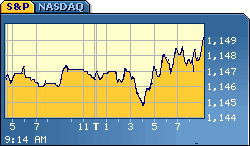One of the main arguments in the corner of the deflationistas is restricted supply of credit to industry and consumers. The most extreme call this period "peak credit". The culprits for that alleged credit crunch are the recent multi billion dollar losses at financial institutions world wide and their supposedly depleted capital base.
The Federal Reserve bank of St.Louis releases timely data (on a monthly and weekly bases) concerning the amount of credits loaned out from U.S. commercial banks in the form of H.8 assets and liabilities of commercial banks. On that level it should surprise at least those on the deflation train to learn that C&I loans reported on a weekly basis are still growing at a $110 billion to $140 billion range compared to a year ago. The most recent weekly data (July 2, 2008) for that loan group are growing close to $120 billion compared to the a year ago (see right side panel of chart 1).
chart 1, click to enlarge 
A similar scenario is being played out for another important loan group. Consumer loans from all commercial banks recorded on a monthly basis are still growing by about $65 billion dollar by June 1, 2008 compared to the same month last year (see left hand panel on chart 2). That is close to a record and up from about $20 billion at the beginning of the credit crises.
Not surprisingly another loan group, real estate loans at all commercial banks, continues its decline. On a monthly basis the growth rate was $180 billion on June 1, 2008 compared to last year. That is down significantly from a peak of about $450 billion at the beginning of 2007 (see right hand panel of chart 2 and chart 3). This is hardly surprising given the state of the housing market and the persistent failure of the securitization market. We will not expect significant recovery in this loan group for the foreseeable future. Even with real interest rates being negative we have not seen mortgage rates coming down, to the contrary are going higher, mainly because of the problems in the secondary mortgage market.
chart 2, click to enlarge 
At this time so called "peak credit" is only obvious in real estate loans. The deflation scenario is not applicable to the rest of the economy as this data series clearly demonstrates. The loss of about $300 billion in total loan growth and investments at all commercial banks from the beginning of this year to June 1, 2008 compared to the same time period last year can be attributed primarily to the loss in real estate loans (see chart 3).
chart 3, click to enlarge
Moreover Jean-Claude Trichet, President of the ECB, said the following at his latest policy statement on June 5 2008:
However, the growth of loans to non-financial corporations has remained very robust. While some moderation can be expected in the future in the light of tightening financing conditions and slower economic growth, bank borrowing by euro area non-financial corporations grew at an annual rate of 14.9% in April 2008, and the flow of loans in recent months has been strong.
source: Release: H.8 Assets and Liabilities of Commercial Banks in the United States
The Federal Reserve bank of St.Louis http://research.stlouisfed.org/fred2/release?rid=22&soid=1
source: Introductory statement
Jean-Claude Trichet, President of the ECB, Frankfurt am Main, 5 June 2008 http://www.ecb.int/press/pressconf/2008/html/is080703.en.html
read also: What credit crisis? - Commercial and Industrial Loans are still growing
Friday, April 25, 2008 http://manonthestreet64.blogspot.com/2008/04/commercial-and-industrial-loans-20-year.html
Wednesday, July 16, 2008
Consumer loans and C&I loans at commercial banks are still growing
Posted by
Fred
at
12:40 PM
![]()
Subscribe to:
Post Comments (Atom)



No comments:
Post a Comment